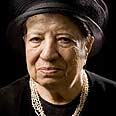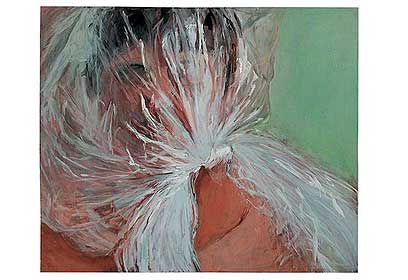

So, what does a women's head covering look like? The immediate answer would be a hat or a scarf, but the eight artists participating in the "Glu-ya" exhibition, which opens at the Lifschitz Teachers' College in Jerusalem on Thursday, have a rather different perception of the issue.
Head covering for women is a significant topic in the modern ultra-orthodox discourse. The artists – two men and six women, share with the viewers their contemplations: Some from a critical perspective, others from an emphatic one or as a challenging foundation for artistic creation.

Post-secular notion (Photo: Sigal Edelman)
The possibility of examining the issue through emphatic eyes can be seen in the work of Micha Simchon, "Covered Women", which seeks to examine the subject not as an act of female oppression by men, but rather as a celebration of women's free choice in a world where freedom from religion and freedom of religion are considered equal expressions of personal choice.

Critical view (Photo: Hana Goldberg)
Sigal Edelman, in her photographed portraits "Women in Black and White", raises a similar question: Six women were photographed twice – once as secular figures and once as religious figures wearing a head covering. This work stems from a "post-secular" notion, which asserts that "secularism" and "religiousness" are not opposites, but rather interrelated terms.
A different, critical view is presented by artist Hana Goldberg, who painted a woman whose head covering has been replaced with a transparent nylon bag that covers her entire head. Pnina Geffen's video, "Woman's Hair", expresses the complexity and delicate variety hat exist in a world loyal to Orthodox Halacha.















